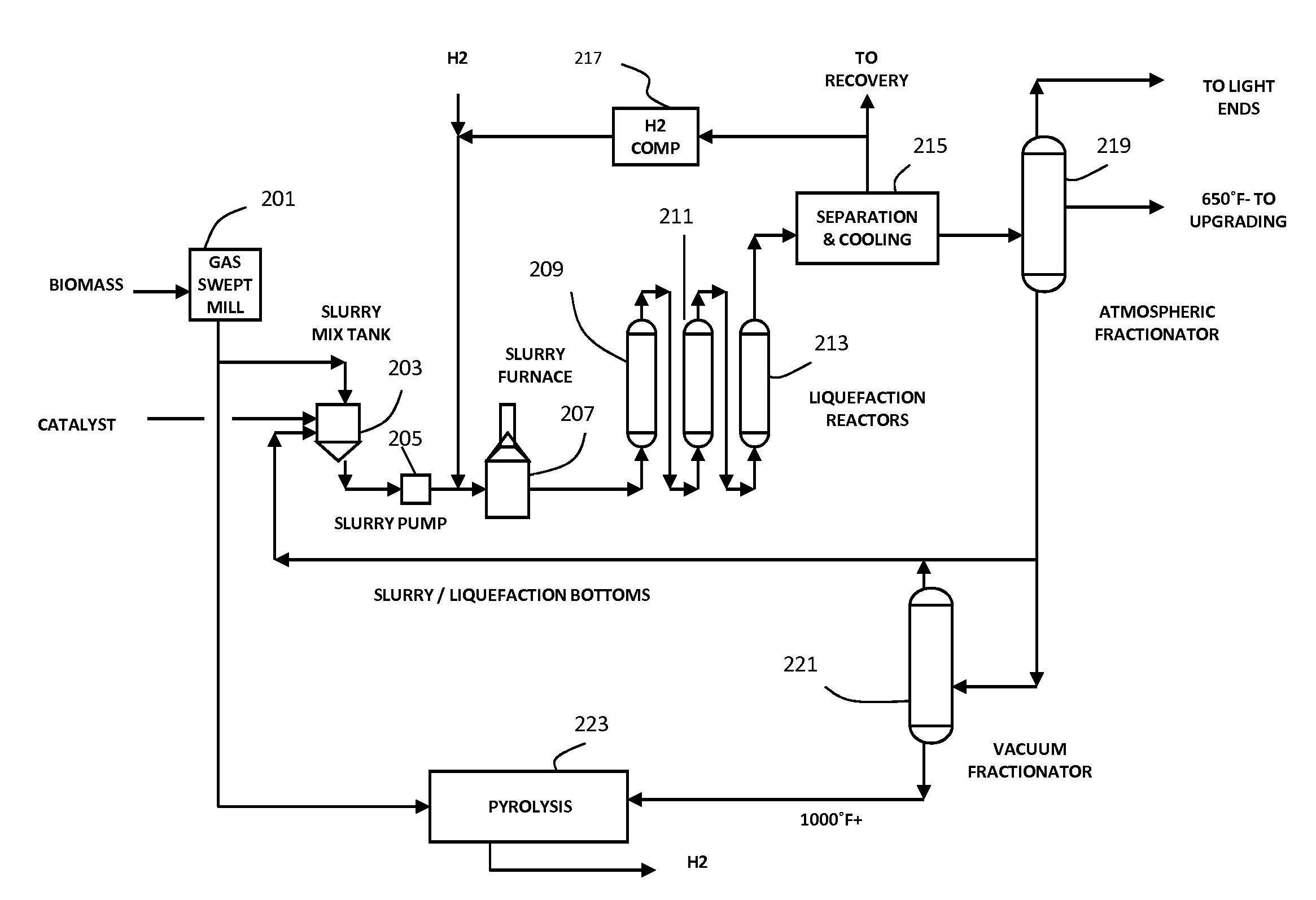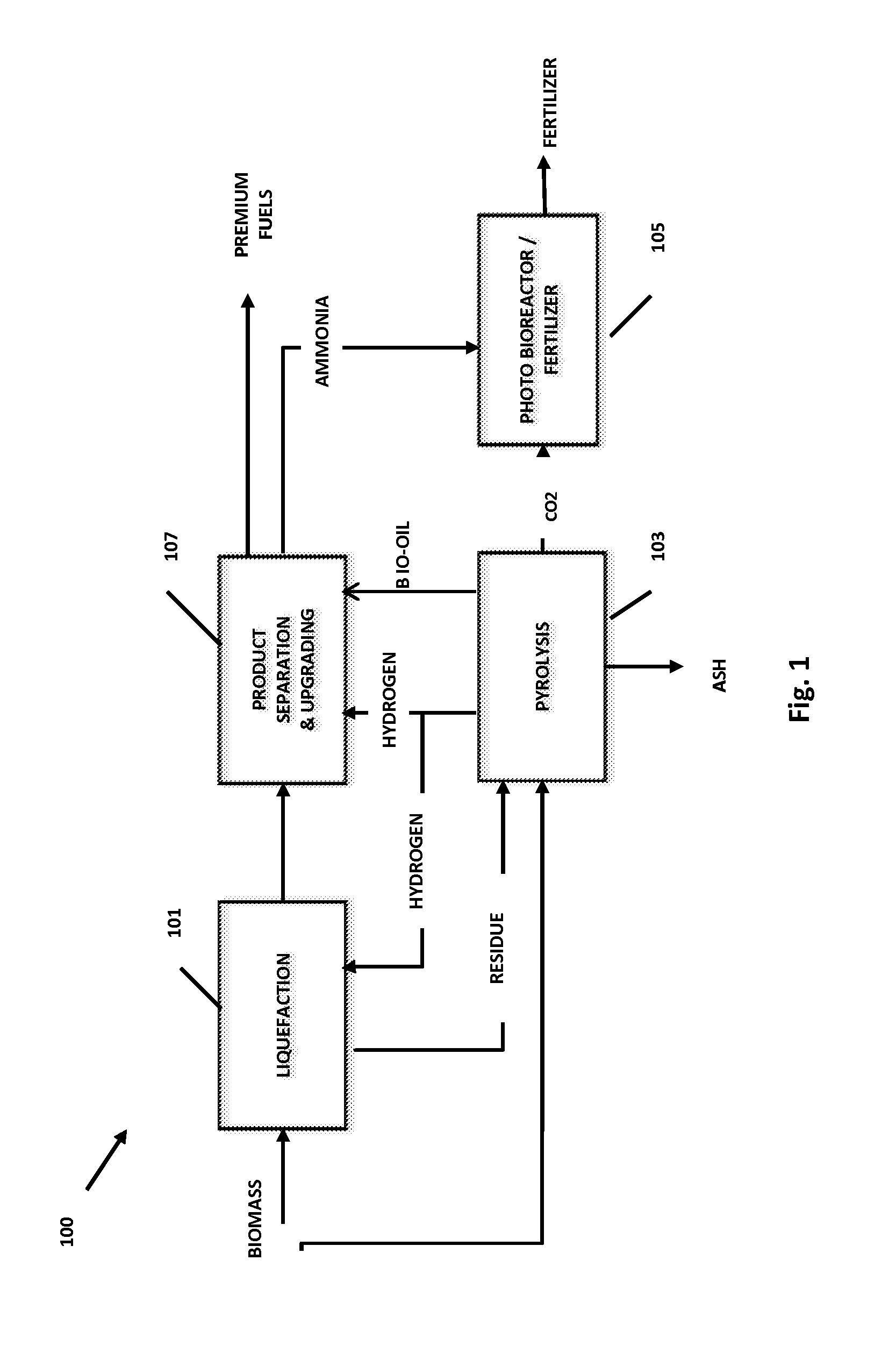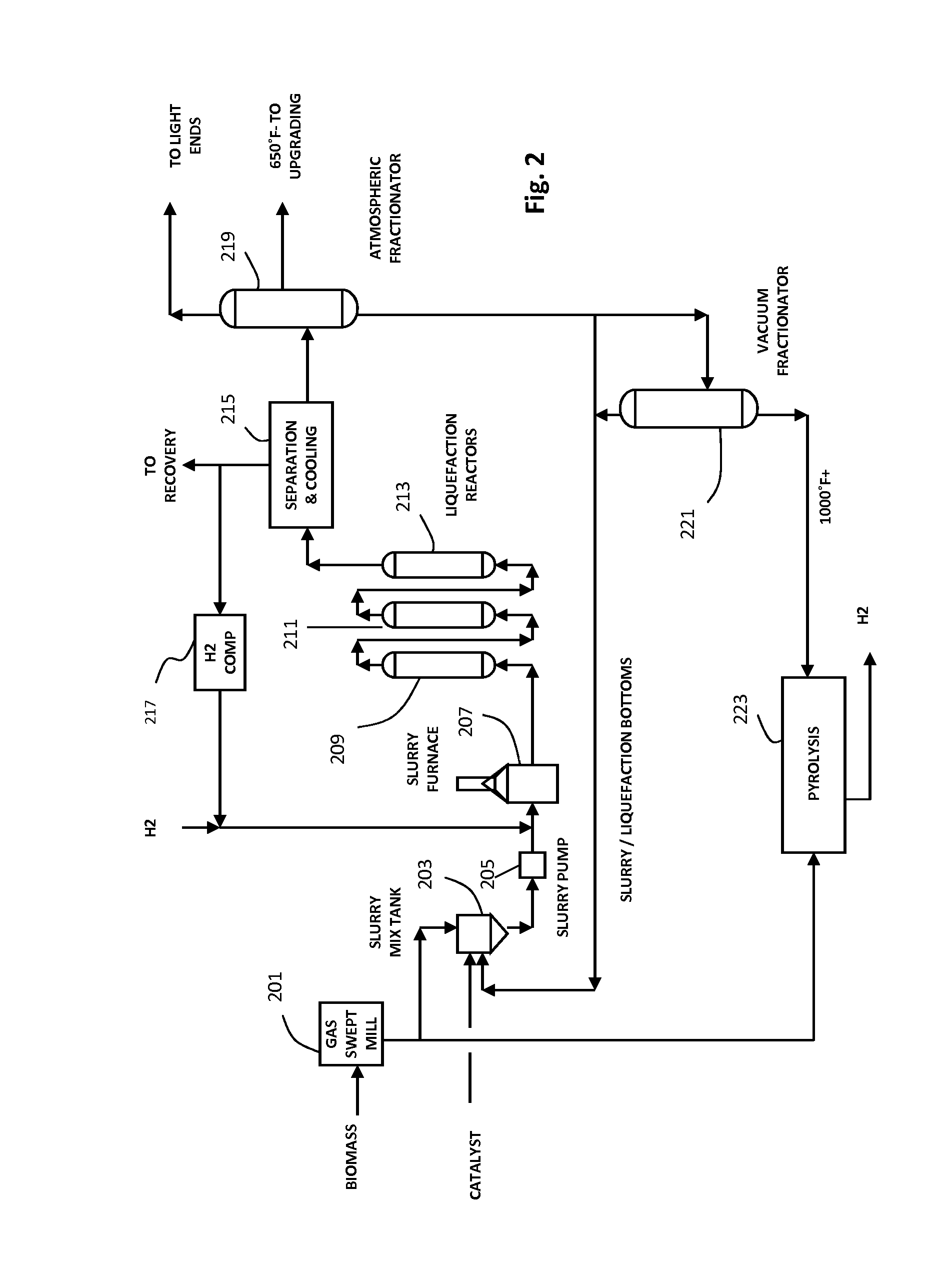Integrated processes for producing fuels and biofertilizers from biomass and products produced
a technology of biomass and biofertilizer, which is applied in the direction of hydrocarbons, electrical coke oven heating, energy input, etc., can solve the problems of reducing the sequestration potential of carbon, so as to achieve the effect of increasing the overall carbon sequestration potential
- Summary
- Abstract
- Description
- Claims
- Application Information
AI Technical Summary
Benefits of technology
Problems solved by technology
Method used
Image
Examples
Embodiment Construction
[0018]Referring now to FIG. 1 of the drawings, there is illustrated a preferred embodiment of the integrated biomass to liquids (IBTL) process and system of the invention, in which biomass is converted to liquids in the liquefaction system 101 and biomass residues from the liquefaction step and / or other carbon containing process wastes and, optionally additional biomass, are pyrolyzed in the pyrolysis system 103 to produce structured biochar, hydrogen, bio oil and, optionally, syngas for an indirect liquefaction process such as Fischer Tropsch synthesis or methanol synthesis (not shown). The biomass feedstock may be obtained from seed crops, byproducts in food crop production, waste products from farming, food production, cooking oil, municipal operations, or other conventional sources, and / or algae. The pyrolysis system 103, when operated with water or oxygen co-feed, or the hydrogen production systems of the integrated IBTL process also generates large amounts of concentrated, pur...
PUM
| Property | Measurement | Unit |
|---|---|---|
| pore size | aaaaa | aaaaa |
| pore size | aaaaa | aaaaa |
| pore size | aaaaa | aaaaa |
Abstract
Description
Claims
Application Information
 Login to View More
Login to View More - R&D
- Intellectual Property
- Life Sciences
- Materials
- Tech Scout
- Unparalleled Data Quality
- Higher Quality Content
- 60% Fewer Hallucinations
Browse by: Latest US Patents, China's latest patents, Technical Efficacy Thesaurus, Application Domain, Technology Topic, Popular Technical Reports.
© 2025 PatSnap. All rights reserved.Legal|Privacy policy|Modern Slavery Act Transparency Statement|Sitemap|About US| Contact US: help@patsnap.com



